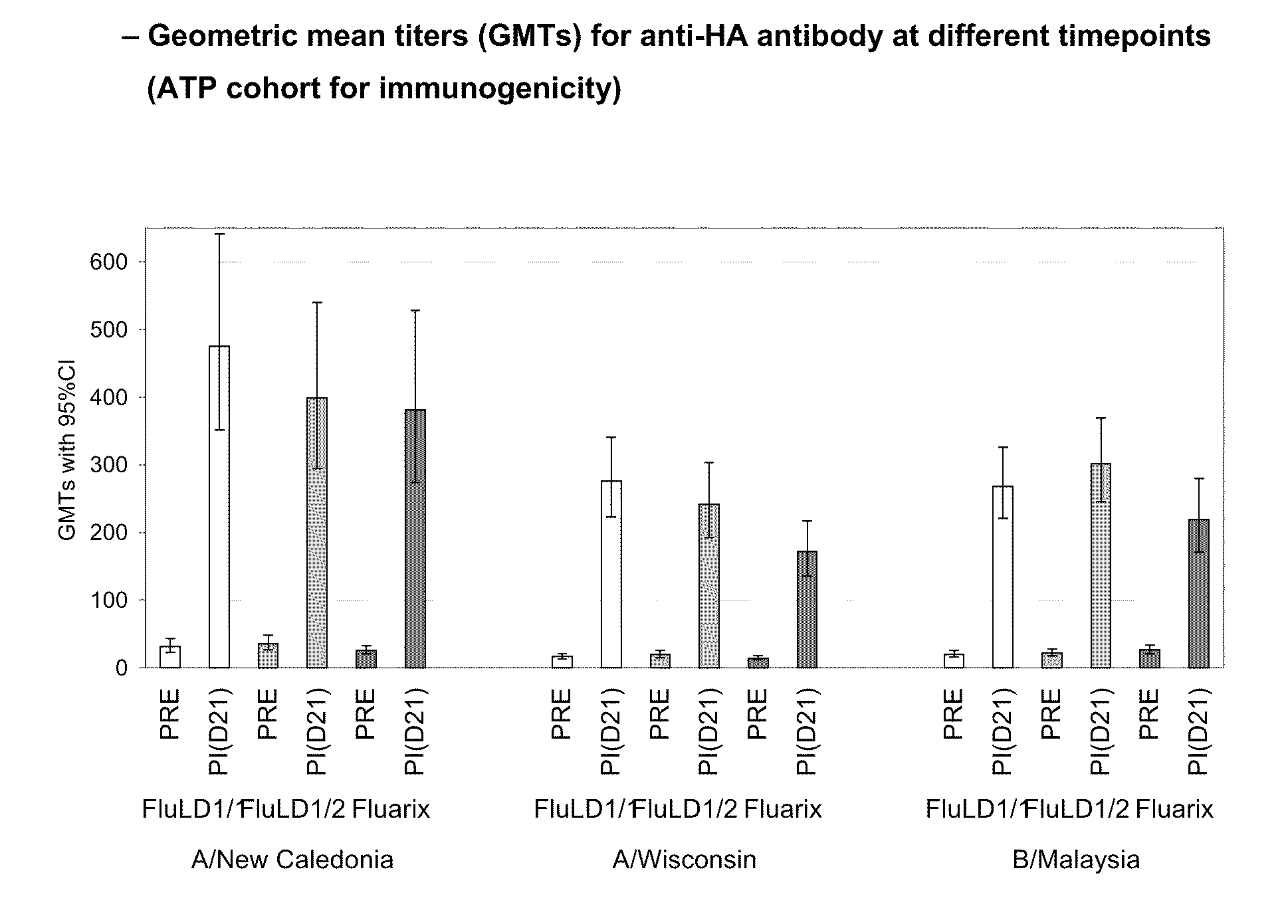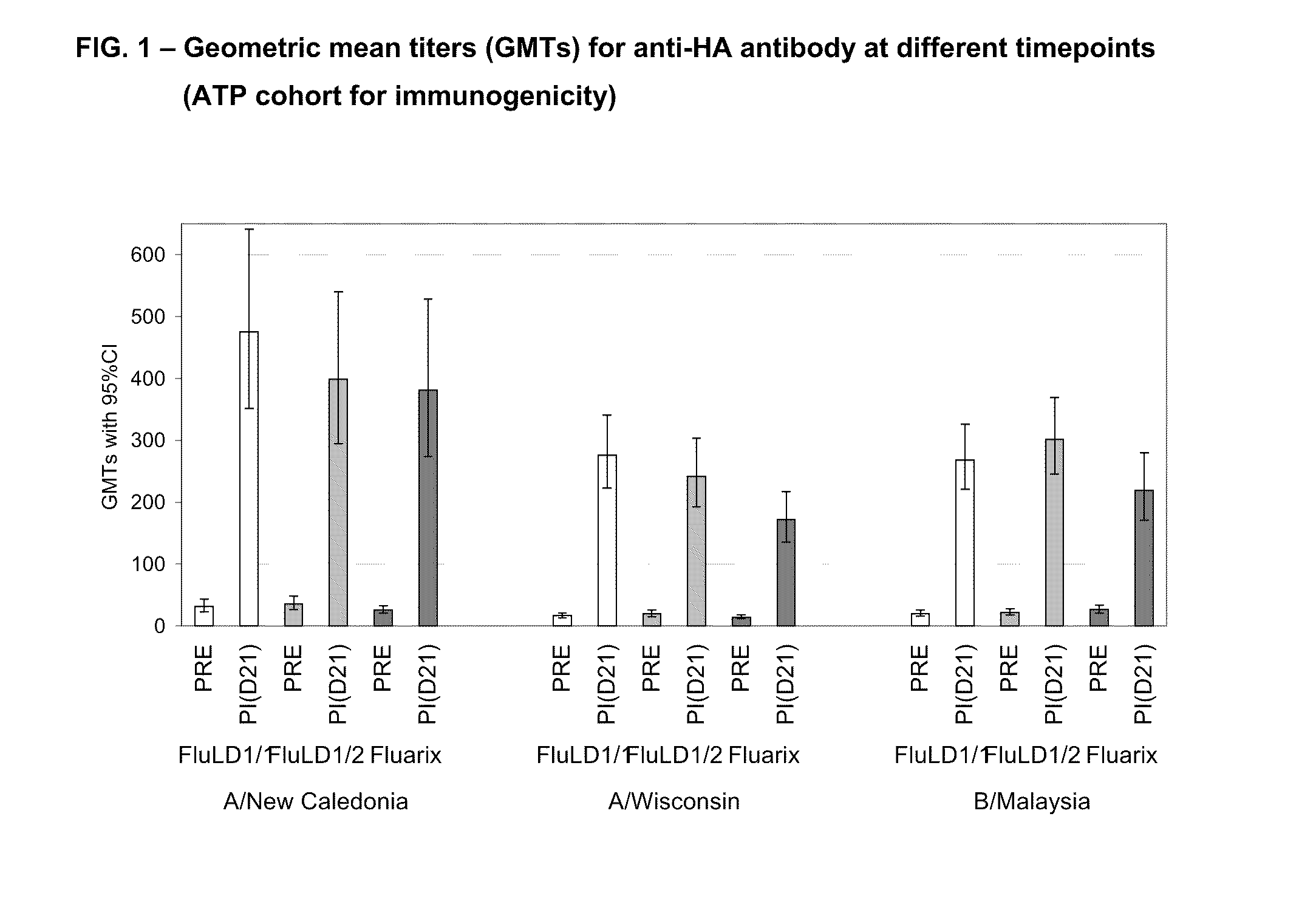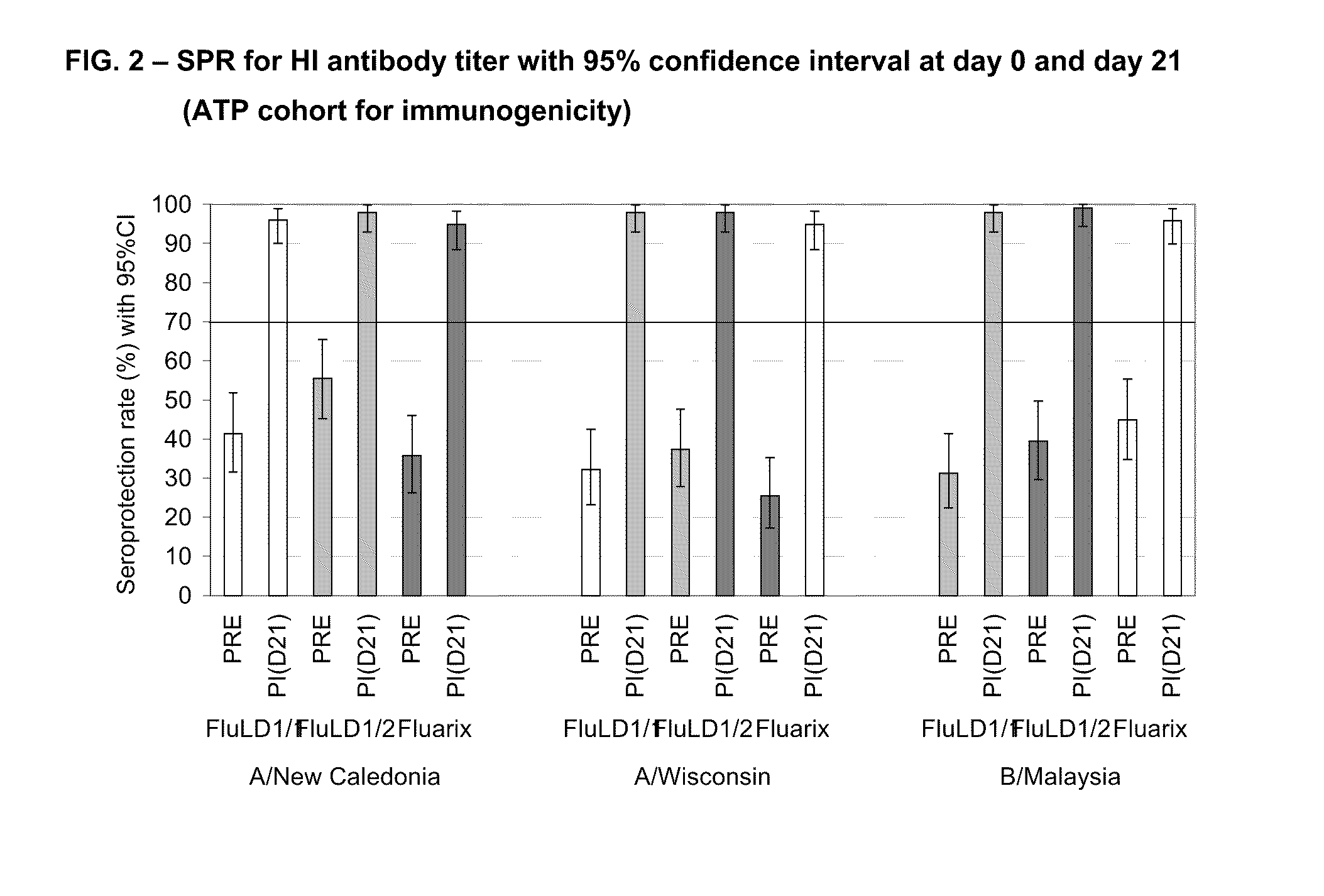Influenza vaccine
a technology of influenza vaccine and composition, applied in the field of influenza vaccine, can solve the problems of high rate of transcription error, high cost, and high cost, and achieve the effect of improving the supply of influenza vaccines and reducing the amount of influenza antigen
- Summary
- Abstract
- Description
- Claims
- Application Information
AI Technical Summary
Benefits of technology
Problems solved by technology
Method used
Image
Examples
example i
Immunological Read-Out Methods
[0335]I.1. Mice Methods
[0336]I.1.1. Hemagglutination Inhibition Test
[0337]Test Principle (Classical Procedure).
[0338]Anti-Hemagglutinin antibody titers to the three (seasonal) influenza virus strains are determined using the hemagglutination inhibition test (HI). The principle of the HI test is based on the ability of specific anti-Influenza antibodies to inhibit hemagglutination of red blood cells (RBC) by influenza virus hemagglutinin (HA). Heat inactivated sera are treated by Kaolin and RBC to remove non-specific inhibitors. After pretreatment, two-fold dilutions of sera are incubated with 4 hemagglutination units of each influenza strain. Red blood cells are then added and the inhibition of agglutination is scored. The titers are expressed as the reciprocal of the highest dilution of serum that completely inhibited hemagglutination. As the first dilution of sera is 1:20, an undetectable level is scored as a titer equal to 10.
[0339]Adaptation for H5N...
example ii
Preparation of the Oil-in-Water Emulsion and Adjuvant Formulations
[0443]Unless otherwise stated, the oil / water emulsion used in the subsequent examples is composed an organic phase made of 2 oils (alpha-tocopherol and squalene), and an aqueous phase of PBS containing TWEEN™ 80 or Polysorbate 80 as emulsifying agent. Unless otherwise stated, the oil-in-water emulsion adjuvant formulations used in the subsequent examples were made comprising the following oil-in-water emulsion component (final concentrations given): 2.5% squalene (v / v), 2.5% alpha-tocopherol (v / v), 0.9% polyoxyethylene sorbitan monooleate (v / v) (TWEEN™ 80), see WO 95 / 17210. This emulsion, termed AS03 in the subsequent examples, was prepared as followed as a two-fold concentrate.
[0444]II.1. Preparation of Emulsion SB62
[0445]This method was used in the studies reported in the clinical and pre-clinical examples sections. The preparation of the SB62 emulsion is made by mixing under strong agitation of an oil phase compose...
example iii
Clinical Trial in an Adult Population Aged 18-59 Years with a Vaccine Containing a Split Influenza Antigen Preparation and Two Doses of AS03 Adjuvant (Flu-LD-004)
[0448]III.1. Introduction
[0449]A phase II, controlled, randomized, single blind study was conducted in an adult population aged 18-59 years old in 2006 in order to evaluate the immunogenicity, safety and reactogenicity of the GlaxoSmithKline Biologicals low dose influenza candidate vaccine (i.e. containing 5 μg HA per strain) with two doses of AS03 adjuvant. The humoral immune response (i.e. anti-hemagglutinin) was measured 21 days after intramuscular administration of one dose of an AS03 adjuvanted vaccine. FLUARIX™ was used as reference.
[0450]III.2. Study Design
[0451]Three groups of subjects in parallel received the following vaccine intramuscularly:[0452]one group of 100 subjects receiving one injection of the low dose split virus influenza vaccine containing 5 μg HA adjuvanted with AS03 (FluLD1 / 1)[0453]one group of 100 ...
PUM
 Login to View More
Login to View More Abstract
Description
Claims
Application Information
 Login to View More
Login to View More - R&D
- Intellectual Property
- Life Sciences
- Materials
- Tech Scout
- Unparalleled Data Quality
- Higher Quality Content
- 60% Fewer Hallucinations
Browse by: Latest US Patents, China's latest patents, Technical Efficacy Thesaurus, Application Domain, Technology Topic, Popular Technical Reports.
© 2025 PatSnap. All rights reserved.Legal|Privacy policy|Modern Slavery Act Transparency Statement|Sitemap|About US| Contact US: help@patsnap.com



